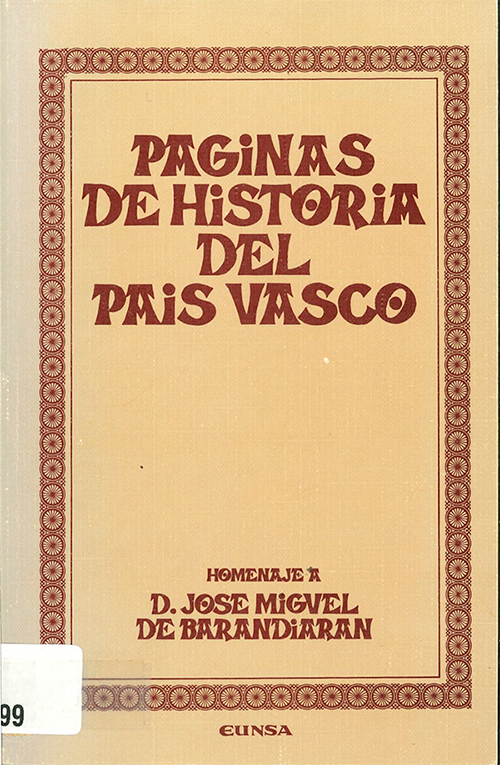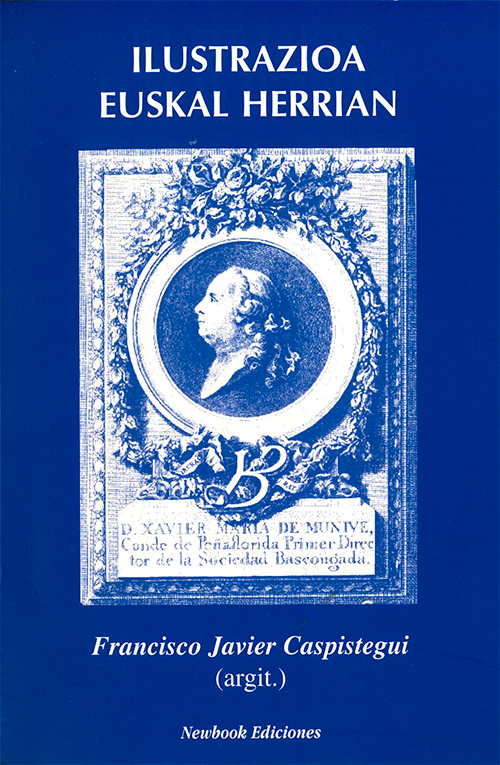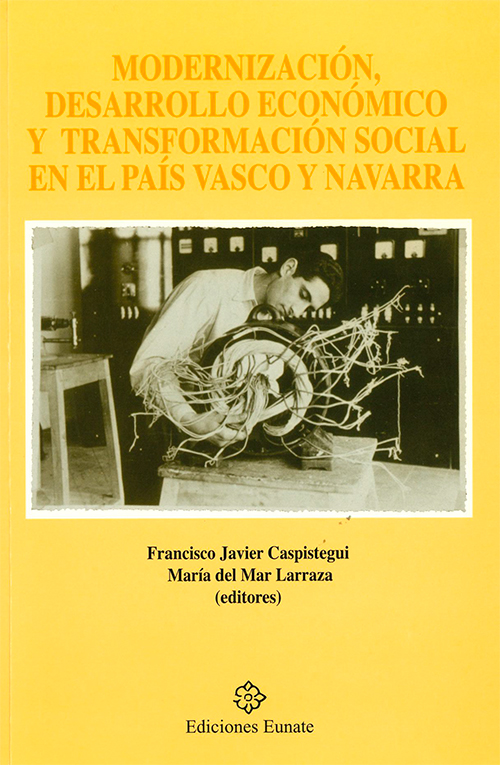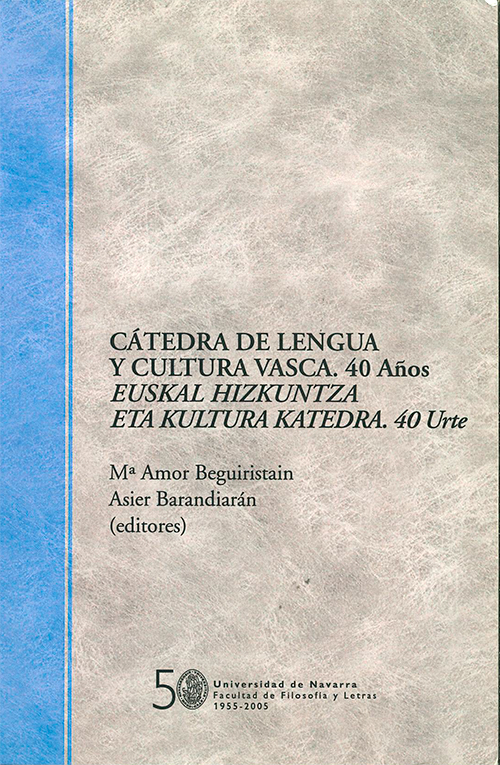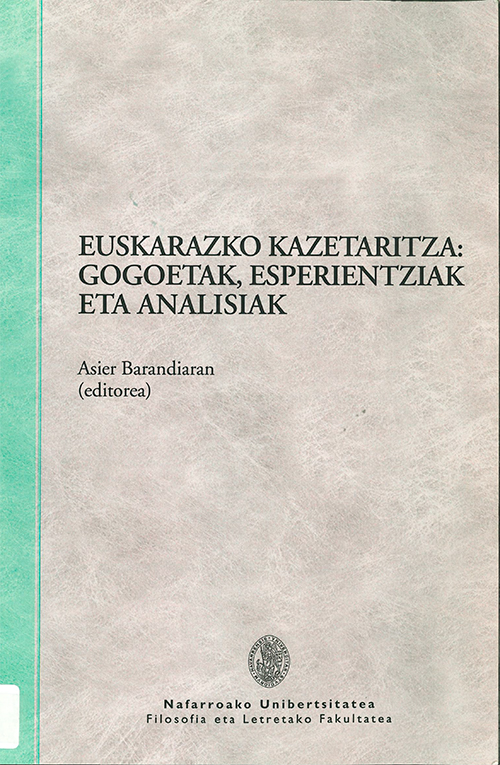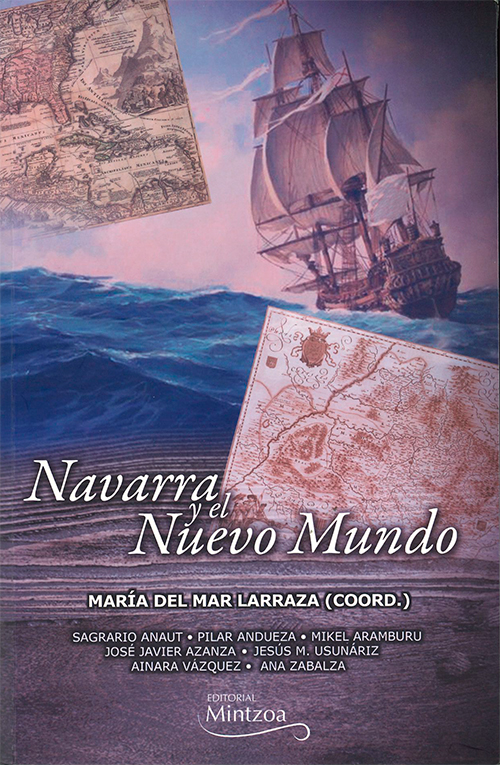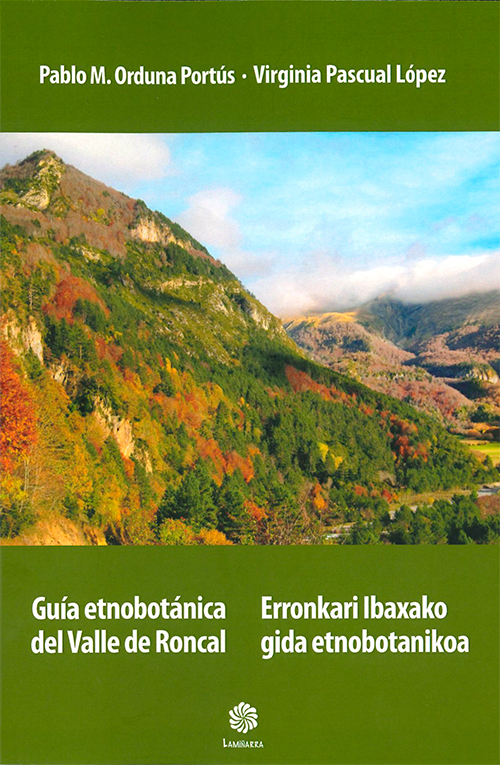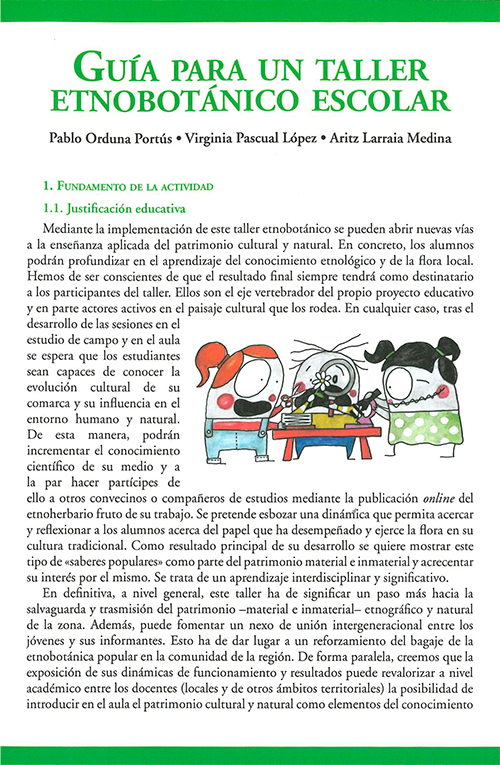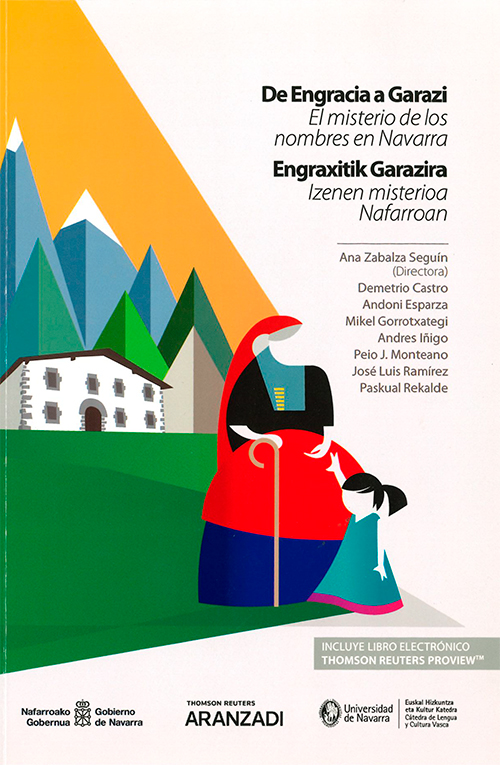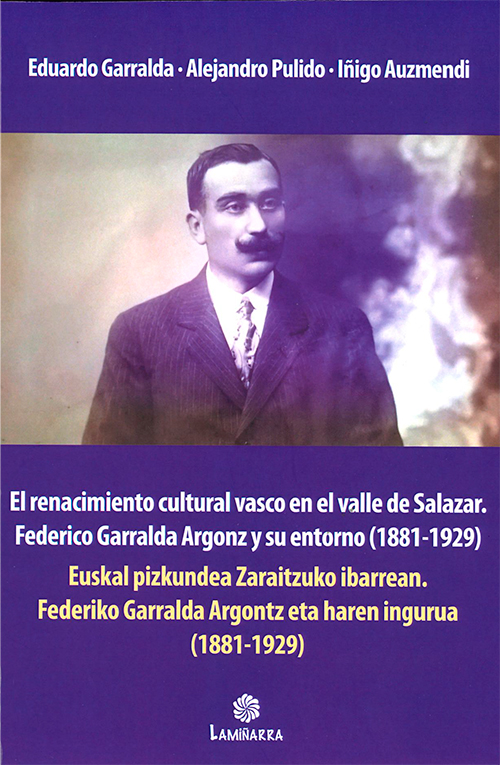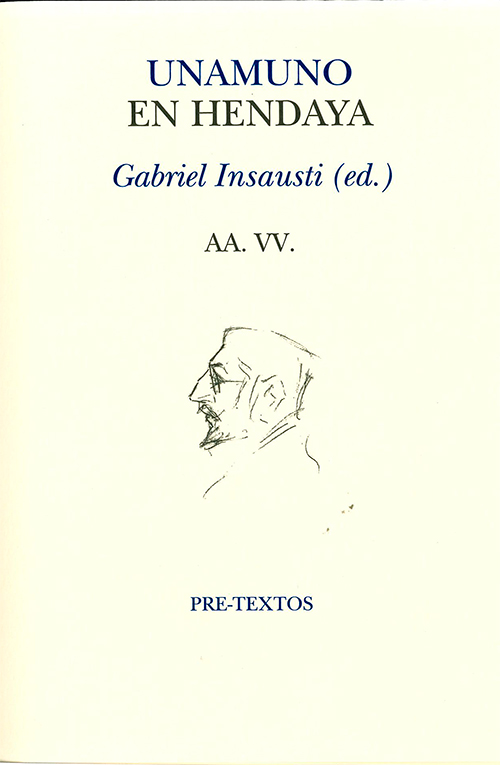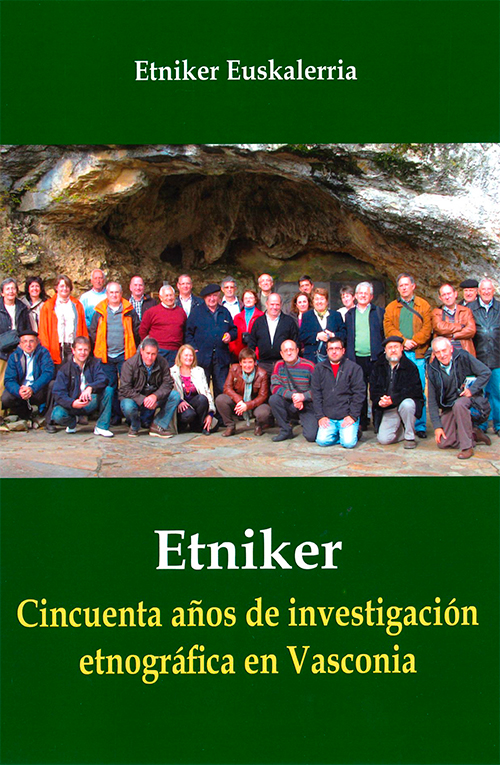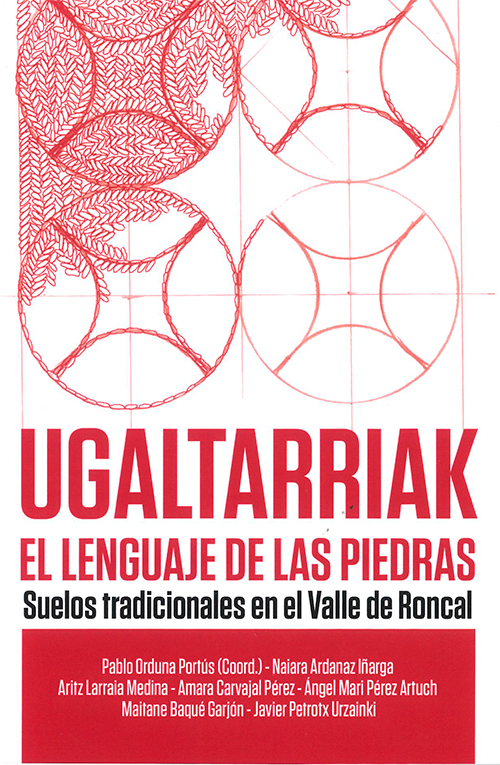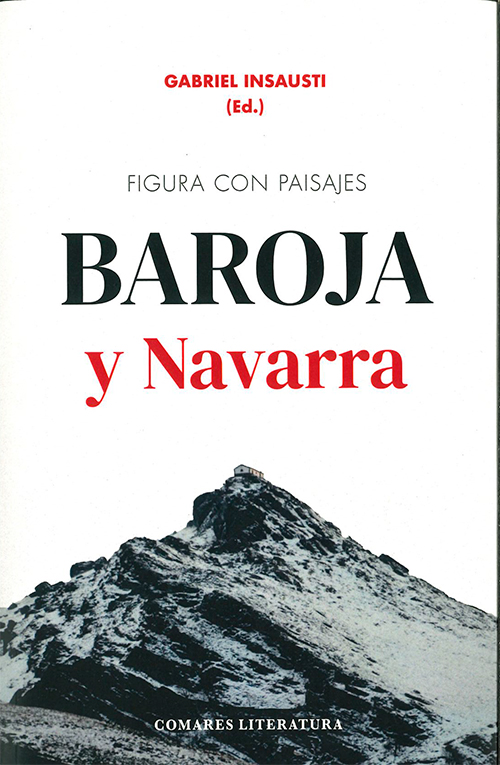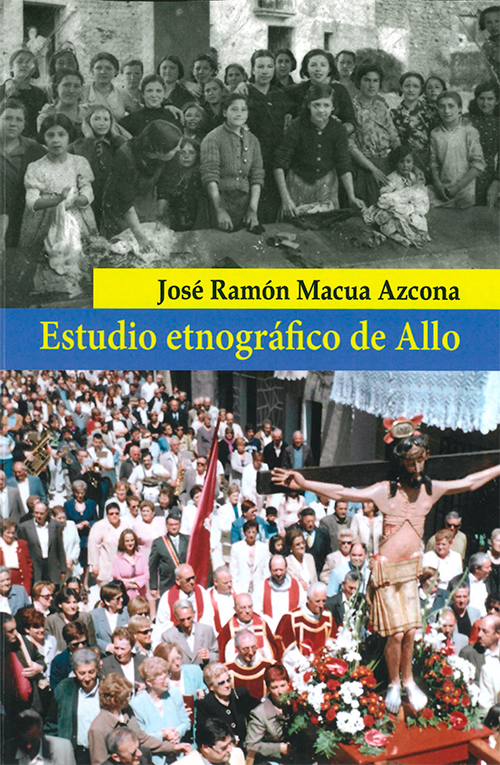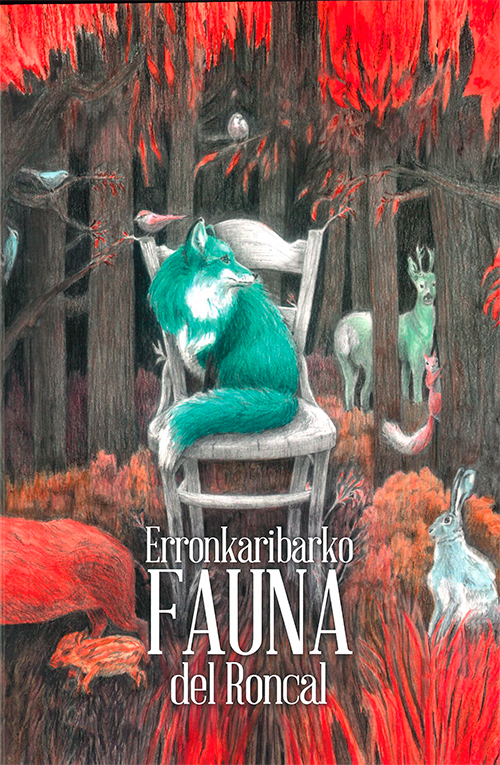Publications
|
|
(1980) Páginas de Historia del País Vasco. Homenaje de la Universidad de Navarra a D. José Miguel de Barandiaran, Pamplona, Eunsa, 198 pp. ISBN: 84-313-0687-4. The present collective work gathers the lectures given at the end of the seventies in homage to the great Basque ethnologist, folklorist and prehistorian, under whose direction the Chair of language and Basque Culture of the University of Navarra began its activity. A deep academic and scientific recognition runs through the pages of the book, dedicated both to the semblance of the various research facets of D. José Miguel and to the presentation of several programs of study of topic Basque. The authors are José Mª Satrústegui, Ignacio Barandiaran, Mª Amor Beguiristain, Luis Suárez Fernández, José Miguel de Azaola and Francisco Javier Zubiaur.
|
|
(1998) Caspistegui, Francisco Javier (argit.): Ilustrazioa Euskal Herrian, Pamplona- Iruñea, Newbook Ediciones, 178 or. ISBN: 84-89648-88-3. The study of the Enlightenment in Euskal Herria begins the collection of books published in the framework the Diploma programs of study Basque programs of study 1994-2008), created by the Chair to promote both teaching and research. The book analyzes essential aspects of the evolution of Basque culture in the 18th century, especially those most influenced by the Enlightenment, a phenomenon that developed in these lands between innovation and tradition. Under the direction of Francisco Javier Caspistegui, professor of the aforementioned Diploma, the work gathers the contributions of nine specialists -Lartaun Egibar and Alfonso Irigoien, from the University of Deusto; Montserrat Gárate, Xabier Altzibar, Anton Erkoreka and José María Urkia, from the University of the Basque Country; Manex Goyhenetche, from the University of Pau; and Julen Bilbao and José Miguel Aranburu, historians- and is almost entirely written in Basque. |
|
|
(2003) Caspistegui, Francisco Javier & Larraza, Mª. del Mar (eds.), Modernización, development económico y transformación social en el País Vasco y Navarra, Pamplona- Iruñea, Ediciones Eunate, 223 pp. ISBN: X. The publication gathers the conference proceedings of the seminar of the same name held in 2001. It analyzes the moments core topic of the development of our recent history, delving in a particular way in the social, political and cultural implications of a vast modernization process that ended up affecting -with different rhythm and intensity- all the peninsular Basque territories. Articulated in two large blocks that deal with the first and the second industrialization, the work gathers the research of professors José Antonio García Durán, Carmen Erro, María Luisa Garde and Francisco Javier Caspistegui, from the University of Navarra, and Jesús Mª. Valdaliso, Mercedes Arbaiza, Ignacio Arana, Ludger Mees and Joseba Arregi, from the University of the Basque Country.
|
|
(2006) Beguiristain, María Amor and Barandiaran, Asier (eds.), Chair de language y Cultura Vasca. 40 años / Euskal Hizkuntza eta Kultura Katedra. 40 urte, Pamplona, School of Philosophy and Letters, University of Navarra, 224 pp. ISBN:X. The publication gathers the lectures given on the occasion of the commemorative events of the fortieth anniversary of the creation of the Chair of Basque language and Culture, by then already chaired, for several years, by the philologist Ana Mª Echaide. The Issue begins with two programs of study that deal with the Chair s trajectory and its main contributions to Basque linguistics and ethnology, written by the aforementioned Ana Echaide and by Mª Amor Beguiristain, who continued the work of Father Barandiaran, and is completed with two sections language and Culture-, which bring together the unpublished contributions, in Basque and Spanish, of the specialists Jon Kortazar, Adolfo Arejita, Eloy Gómez Pellón, Luis Calvo Calvo, Susana Irigaray Soto and Julián Díez Torres.
|
|
|
(2007) Barandiaran, Asier (ed.), Euskarazko Kazetaritza: gogoetak, esperientziak eta analisiak, Nafarroako Unibertsitatea, Filosofia eta Letretako Fakultatea, 113 or. ISBN: 84-8081-047-5. The Basque philologist and professor at the Chair, Asier Barandiaran Amarika, brings together in this Issue nine contributions by renowned journalists who participated in some of the five editions of the Basque Journalism conference held at the University of Navarra between 2000 and 2007, or who took part in some of the Seminars programs of study Basque programs of study during those years, and who left their "reflections, experiences and analysis" for the knowledge and enjoyment of all, but especially of the numerous students of the School of Communication interested in journalism in Basque. The contributions correspond to Asier Barandiaran himself and to Xabier Altzibar, Joxemiel Bidador, Javier Díaz Noci, Julio Iturri, Odile Kruzeta, Xabier Letona and Lourdes Otaegi. |
|
(2016) Larraza, María del Mar (coord.), Navarra y el Nuevo Mundo, Pamplona, Mintzoa, 239 pp. ISBN: 978-84-96513-18-1. Taking as a starting point the Symposium "Navarra and America", organized by the Chair in 2015 on the occasion of the presence at the University of Navarra of William Douglass, pioneer scholar of the Basque diaspora, the publication gathers the contributions of seven historians who reconstruct the main milestones of the Indian phenomenon, largely from the written and oral testimony of its protagonists. The work investigates the causes of the departure, the multifaceted profile the emigrants, the diversity of trajectories that the Indian adventure brought about and the rich patrimonial bequest they left in our land. The authors are Sagrario Anaut, Pilar Andueza, Mikel Aramburu, José Javier Azanza, Jesús M. Usunáriz, Ainara Vázquez and Ana Zabalza. |
|
|
(2017) Orduna Portús, Pablo and Pascual López, Virginia, guide etnobotánica del Valle del Roncal. knowledge y uso tradicional de las plantas /Erronkari Ibaxako gida etnobotanikoa. Landareen ezagutza eta ohizko erabilera, Pamplona-Iruñea, Lamiñarra, 429 p. ISBN: 978-84-617-8068-6. A novel and pioneering publication that combines the study of the local flora with the study of its use by the people of the territory throughout history. The symbiosis of botanical and ethnological analysis offers a complete vision of the cultural landscape forged in this Pyrenean region, which is reflected in the oral literature, folk medicine, handicrafts or the linguistic richness of the place. The Catalog, published in Spanish and Basque, as the whole work, includes more than 250 varieties of plants, whose file includes, in each case, its scientific and vernacular name, its botanical description, its toponymic implantation in the valley and the uses that have been given to it in the traditional culture. All this is accompanied by numerous illustrations and images, in the latter case, unpublished. The authors are Pablo Orduna, historian, member of Etniker Navarra, and Virginia Pascual, biologist. |
|
(2017) Orduna Portús, Pablo; Pascual López, Virginia, and Larraia Medina, Artitz, guide para un taller etnobotánico escolar / Eskola-tailer etnobotanikorako gida, Xeingorri. 16 p. DL: NA 2145-2017. proposal of a school workshop for the elaboration of an ethnoherbarium, which aims to introduce students knowledge the role of flora in their traditional culture, helping them to integrate "popular knowledge" in their cultural heritage, encouraging interdisciplinary learning and fostering their commitment to the defense and transmission of ethnographic and natural heritage -material and immaterial-. All the materials can be found on the following web page. |
|
|
(2018) Insausti, Gabriel (ed.), El group Gaur. 50 años, Granada, Comares, 197 pp. ISBN: 978-84-9045-646-0. On the occasion of the 50th anniversary of the Basque artists' group Gaur, the book gathers the reflections of several specialists -Fernando Golvano, Peio Aguirre, Carmen Alonso-Pimentel, Maria Jose Aranzasti, Javier Balda, Alvaro de la Rica, Juan Pablo Huércanos, Gabriel Insausti himself ( Chairs secretary), Carlos Tejada and Carmen Urpí- on interesting issues, such as the development of that plural plastic proposal , the viability of the projected cultural "front" in the context of the late Franco regime, the transition to cinema or the architecture of some of those artists, the basic differences between Ibarrola's political and propagandistic attitude and Oteiza's more pedagogical strategy or the delicate relationship between some members of Gaur and the Navarrese artists. |
|
(2018) Zabalza Seguín, Ana (dir.), De Engracia a Garazi. The mystery of names in Navarre / Engraxitik Garazira. Izenen misterioa Nafarroan Pamplona, Thomson Reuters Aranzadi, 294 pp. ISBN: 978-84-9177-674-1. The collective work offers an updated study on the first names, surnames and names of houses in Navarre, both in Basque and Spanish, which together constitute a rich bequest of our immaterial heritage. Several specialists in anthroponymy, oiconymy, linguistics, sociology and heraldry - Demetrio Castro, Andoni Esparza, Mikel Gorrotxategi, Andrés Iñigo, Peio J. Monteano, José Luis Ramírez, Paskual Rekalde and Ana Zabalza herself - unravel the origin of these names, their meaning and their use in different contexts and throughout history, and their transmission and diffusion up to the present day. |
|
|
(2019) Garralda, Eduardo; Pulido, Alejandro, and Auzmendi, Íñigo, The Basque cultural renaissance in the Salazar valley. Federico Garralda Argonz y su entorno (1881-1929) / Euskal pizkundea Zaraitzuko ibarrean. Federiko Garralda Argontz eta haren ingurua (1881-1929), Pamplona-Iruña, Lamiñarra, 299 pp. ISBN: 978-84-09-15100-4. A novel study on the figure and work of Federico Garralda, a Basque lover from Ochagavía and author of numerous articles in Basque Salacenco, published between 1915 and 1927, mostly in the magazine Euskal Esnalea of San Sebastián. This bilingual edition not only revaluates Garralda's significant contribution to the Basque cultural renaissance, but also presents for the first time the Spanish translation of his texts in Salacenco. Thanks to a work of great erudition and rigor, the reader has the opportunity to enjoy in both languages the rich immaterial patrimony of games and customs of the Pyrenees described by that sagacious ochagaviano veterinarian. |
|
(2021) Insausti, Gabriel (ed.), Unamuno en Hendaya, Valencia, Pre-Textos, 295 pp. ISBN: 978-84-18178-68-9. The result of an international symposium, the work gathers the contribution of fourteen specialists who investigate Unamuno's experience in Hendaye, where the writer was exiled from 1925 to 1930 due to his civil service examination to the dictatorship of Primo de Rivera. These were decisive years, of great literary, intellectual and political activity, which ended up forging Unamuno's public figure. These pages cover his ideas, his poems and essays, his letters, but also his propaganda activities, his family relationships and his daily life during his stay in Hendaye. The authors are Iñaki Aldekoa, Rosa Fernández Urtasun, Luis Galván, Víctor García Ruiz, Gabriel Insausti, Felipe Juaristi, Juan José Lanz, Alejandro Martínez Carrasco, José Luis Mora García, Sergio Navarro, Javier de Navascués, Mirjana Políc, Jean-Claude Rabaté and Stephen Roberts. |
|
|
(2021) Ardanaz-Iñarga, Naiara (coord.), Etniker. Fifty years of ethnographic research in Vasconia, Pamplona-Iruñea, Lamiñarra, 237 pp. ISBN: 978-84-09-35513-6. This book was written on the occasion of the 50th anniversary of the creation of the Etniker groups, founded by Mr. José Miguel de Barandiaran. José Miguel de Barandiaran, this collective work offers a detailed review of the research work of the five territorial groups and their confederation during these years: it deals with the beginnings, linked to the European ethnographic research , the Etniker project and its detailed history in each territory, the analysis of its two fundamental academic contributions -the Ethnographic Atlas of Vasconia and the journal Cuadernos de Etnología y Etnografía de Navarra- and an overall evaluation made by specialists from other latitudes from a comparative perspective. Naiara Ardanaz, Anton Erkoreka, Ander Manterola, Mª Amor Beguiristain, David Mariezkurrena, Gurutzi Arregi, Luis Manuel Peña, Juan José Galdos, Gurutze Ezkurdia, José Zufiaurre, Michel Duvert, Jean Etcherry-Ainchart, Thierry Truffaut, Claude Labat, Francisco Javier Zubiaur, William A. Christian Jr, Joaquín Díaz, Luis Vicente Elías and Joseba Agirreazkuenaga. |
|
(2022) Orduna Portús, Pablo (coord.), Ugaltarriak. The language of stones. Suelos tradicionales en el Valle del Roncal, Pamplona, Lamiñarra, 127 pp. ISBN: 978-84-09-46211-7 //Ugaltarriak, Harrien elairëa. Ohiko harzolak Erronkaribaren, Iruñea, Lamiñarra, 127 pp. ISBN: 978-84-09-46212-4. Pioneering study of the mosaic floors of Roncal, conceived as a significant element of the intangible heritage of the valley. The publication, in its double edition in Spanish and Basque, is based on the cataloguing, planimetry and photographic reproduction of the 175 examples inventoried, and offers an analysis of their function in the framework domestic Economics , the origin of the elements that make them up in relation to the geological context of the area and the meaning of their decorative systems. The project, of strong social implication due to the meritorious contribution of the informant neighbors, has been carried out, besides the aforementioned Pablo Orduna, by Naiara Ardanaz, Aritz Larraia, Amara Carvajal, Ángel M. Pérez Artuch, Maitane Baqué and Javier Petrotx. |
|
|
(2022) Insausti, Gabriel (ed.), Figura con paisajes. Baroja y Navarra, Granada, Comares, 288 pp. ISBN: 978-84-1369-490-0. Twelve specialists from very different fields -philologists, writers, historians, philosophers...- offer in this publication a re-reading of Baroja's personality and bequest , in many cases from new perspectives. Through these pages parade the life, work, thought and personality of a writer who continues to arouse the greatest interest, and whose special link with Navarre must be emphasized, but also the significant mark that this land left on his literary work. The authors of this study are, in order of appearance, Francisco Javier Caspistegui, María del Mar Larraza, Antonio Castellote, Iñaki Urricelqui, Gabriel Insausti, Juan Carlos Ara, Ascensión Rivas, Celia Fernández Prieto, Eduardo Michelena, Felipe Juaristi, Daniel Ramírez and Toni Montesinos. |
|
(2023) Macua Azcona, José Ramón, Estudio etnográfico de Allo. position by David Mariezkurrena Iturmendi, Pamplona-Iruñea, Lamiñarra, 846 pp. ISBN: 978-84-09-55047-05. Posthumous edition of degree scroll unpublished ethnographic study of Allo carried out by José Ramón Macua, a deceased member of Etniker Navarra and a well-known resident of the aforementioned locality. The Issue contains exhaustive information on customs, traditions and old ways of life that Macua collected following the ethnographic survey of aita Barandiaran. The result is a work hardly comparable to any other ethnographic publication in Navarre, given the breadth of the informants, the richness of their stories and the antiquity of many of their memories. Also noteworthy are the valuable vocabulary of ancestral words and expressions of the place, as well as a precious collection of illustrative images and photographs of the most diverse areas covered in the study. |
|
|
(2024) Insausti, Gabriel (coord.), Oteiza y lo sagrado, Madrid, Akal, 318 pp. ISBN: 978-84-460-5593-8. Throughout his career, and in the different facets of his artistic activity (sculpture, architecture, essays, poetry), Jorge Oteiza (1908-2003) manifested an intense concern for the nature and the future of the sacred in a world marked by disenchantment and secularization. Oteiza and the Sacred gathers writings by Danila Andreev, Jose Javier Azanza, Raquel Cascales, Lucas Buch, Lourdes Flamarique, Eduardo Michelena, Gabriel Insausti, Javier Ortiz Echagüe, Mari Mar Larraza, Elena Martin, Juan Miguel Otxotorena and Ricardo Piñero that approach the question from different points of view, with the purpose of covering all the disciplines in which the artist was prodigious. |
|
(2024) Orduna, Pablo (dir.), Pérez Artutx, Gotzon and Baquero Martín, Enrique, Bortuko Fauna del Pirineo, Erronkaribarko Gida Etnozoologikoa, guide Etnozoológica del Valle del Roncal, Pamplona-Iruñea, Lamiñarra, 254 pp. ISBN: 979-13-87550-01-1. A study of ethnozoology applied to the Roncal Valley, whose goal is the knowledge the interactions between the local community and the animals of the natural environment from a cultural perspective reflected in different fields, such as language, oral tradition or toponymy. The work, a bilingual edition, includes a guide the one hundred and sixty-two records of the animals studied, specifying their scientific and common names, as well as their different vernacular names, their morphological description and their integration into the local culture and way of life. The work is completed with original drawings by graphic designers Lorea Larraya, Javier Álvarez Vidaurre and Javier Muñoz, and with several final indexes, which include in their two versions Spanish and Basque-, all the names -scientific, vulgar and vernacular- by which the species contemplated are known. |
|
|
This collective work explores the world of entertainment of the Navarrese people at the beginning of the 20th century, a crucial time in which deeply rooted traditional amusements coexist - pelota, txistu and bagpipe music, children's games and songs or carnivals - with new modalities typical of the modernization in the customs and uses of leisure, such as cinema, soccer (in its children's version), tennis or choral music, here represented by the Orfeón Pamplonés (Pamplona Choral Society). The authors are, in alphabetical order, Mikel Berraondo, Alberto Cañada, Francisco Javier Caspistegui, Mari Mar Larraza, David Mariezkurrena, Paola Ruiz López, Karlos Sánchez Ekiza and Jesús M. Usunáriz. The book is published by the publishing house Lamiñarra. |
|
|

